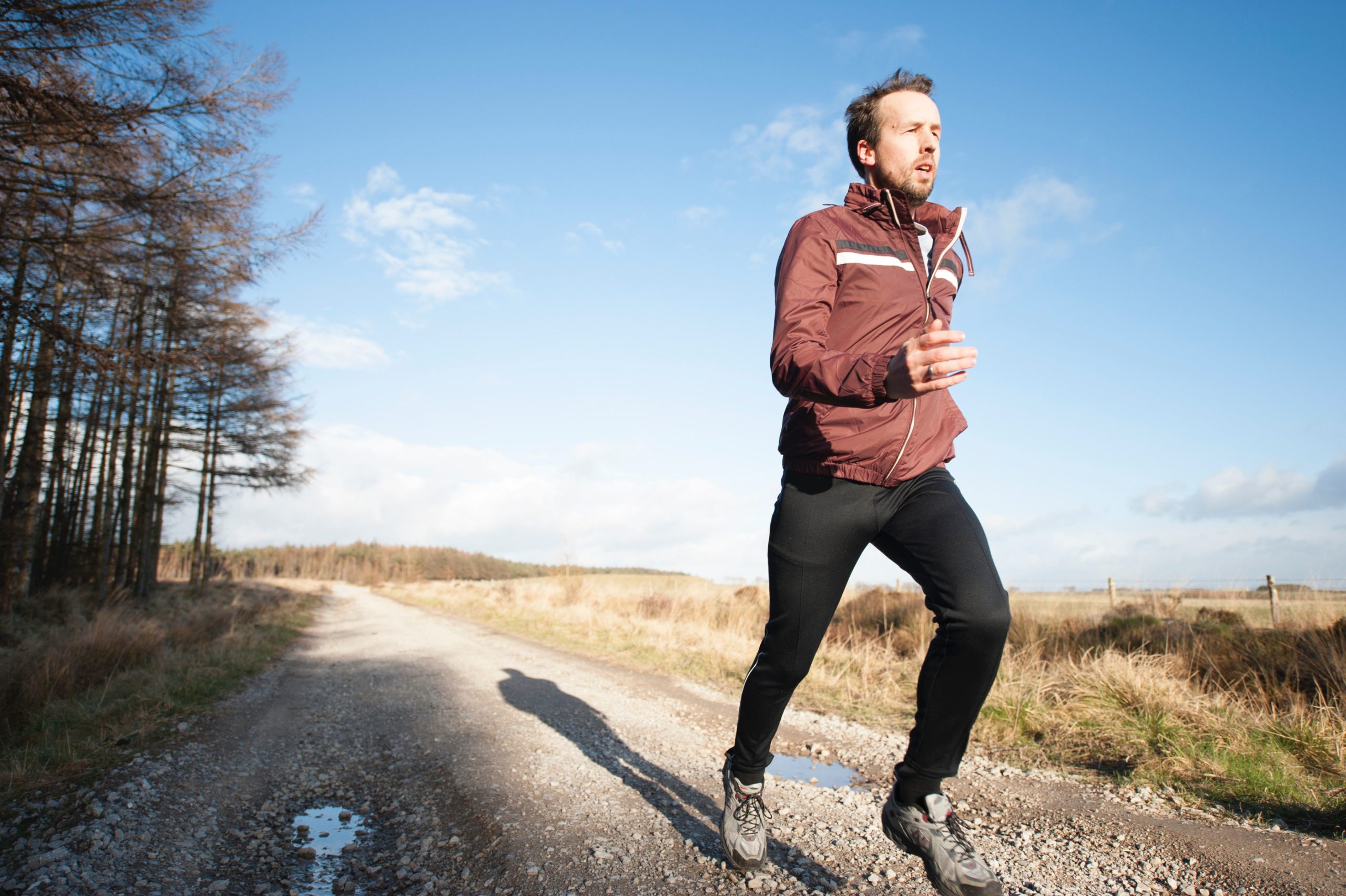I’ve always loved running and ran my first marathon in 2003. It was the Mayor’s Midnight Sun Marathon in Anchorage, Alaska. It was simultaneously agonizing, inspiring, beautiful and horrible. There were steep gravel grades, moose on the course and long stretches of empty wilderness. I was hooked.
There are so many reasons why I love the 26.2. It’s impossible not to get excited at the starting line when you’re standing in a huge mass of people, knowing how hard every person around you has worked to get to that point. Each of those people are amazing and will inspire you every mile of the marathon. Some of my greatest friends are people I’ve met while running because to run 26 miles with someone is to be friends for life—misery loves company and suffering together brings camaraderie. Long distance runners as a whole are a special group of people who take the long view, see the big picture and know that nothing amazing in this life comes quickly or easily.
My favorite 26.2 is the Fargo Marathon in Fargo, North Dakota. The course is flat and the whole town turns out to cheer on thousands of runners and treat them like royalty. There’s a lot of great marathons in great places, but as Dorothy said, “There’s no place like home.”
I’ve run the Fargo marathon when temps were in the mid 70s on race day and runners were feeling the heat. Volunteer medical professionals kept busy at tents along the route giving runners electrolytes and glucose to keep their blood sugar levels up.
The marathon is a taxing event, both mentally and physically. Over the course of 26 miles, the human body burns through its stored carbohydrates and then starts burning stored body fat to maintain the energy required. Over time, this causes the body’s blood sugar levels to drop. If this happens and a runner fails to elevate it with a fast-acting carbohydrate like fruit juice or a sports drink, hypoglycemia (low blood sugar) will develop. The marathoner could experience symptoms like headache, shakiness, excessive sweating and confusion, and heart palpitations. If the runner doesn’t get medical treatment, hypoglycemia can worsen and potentially cause seizures and comas.
In addition to being physically prepared, it’s essential to be nutritionally prepared for the marathon. The body must store glycogen to maintain and control blood glucose levels and maintain endurance. In order for runners to have an adequate supply of muscle glycogen to sustain their blood sugar levels, they must eat at least three balanced meals of carbohydrates, fat and protein every day.
It’s a long accepted fact that carbohydrates play a key role in endurance sports. The most recent position statement of the International Olympic Committee (IOC) is that a high carb diet in the days before competition will help enhance athletic performance, and that athletes should adequately replenish their carbohydrate stores between training sessions and competition.
A 2013 article in the International Journal of Sport Nutrition and Exercise Metabolism by Gareth A. Wallis of the School of Sport, Exercise and Rehabilitation Sciences at the University of Birmingham in the United Kingdom, and Anna Wittekind of the World Sugar Research Organization in London, discusses studies that have been done on the specific role that the carbohydrate sucrose—table sugar—plays in sports like endurance running.[1] The authors outline research that suggests because sucrose contains the component monosaccharides glucose and fructose, it is beneficial for athletes. Research to date suggests that sucrose, due to its component monosaccharides, is as effective as other highly metabolizable carbohydrates at providing a fuel source during endurance exercise and stimulating the production of muscle glycogen during exercise recovery.
There are a lot of misconceptions about sugar and sugar consumption. However, it is very important for runners—and people who will become runners—to understand the vital role that sucrose plays in our diets. Asker E. Jeukendrup, a PhD at the Human Performance Laboratory, School of Sport and Exercise Sciences at the University of Birmingham in the United Kingdom has extensively studied the role of carbohydrates in exercise and he found that “sugar is specifically suited to meet certain aspects of carbohydrate nutrition guidelines for athletes. It should continue to be regarded as one of a variety of options available to help athletes achieve their specific carbohydrate-intake goals.” [1][2]
You’re a runner, whether you’ve discovered it yet or not. It doesn’t matter what your pace is or how many miles you run. If you’re out there running, you’re a runner. There’s a 5k, a half or full marathon and a medal waiting for you, and sugar is your friend who will help you cross the finish line. I’m proud to grow sugar and I’m proud of what it does for the sport I love.
References:
- Wallis GA, Wittekind A. Is There a Specific Role for Sucrose in Sports and Exercise Performance? International Journal of Sport Nutrition and Exercise Metabolism. 2013;23:71-583.
- Jeukendrup AE. Carbohydrate Intake During Exercise and Performance. Elsevier, Inc., 2004.





Get Social with #MoreToSugar